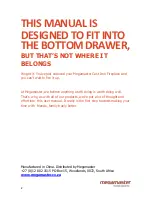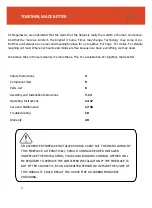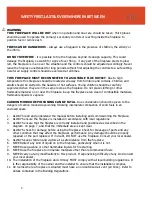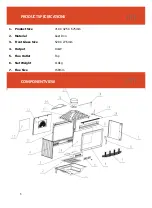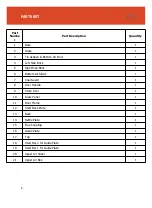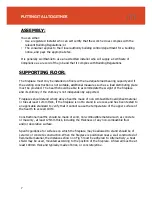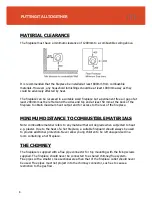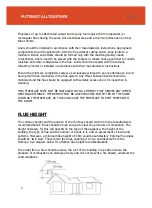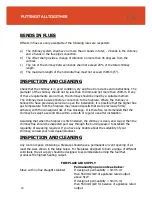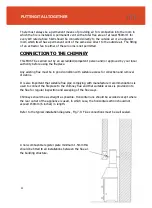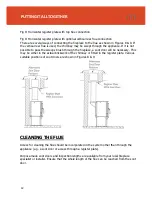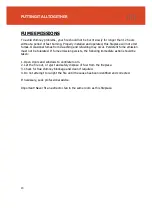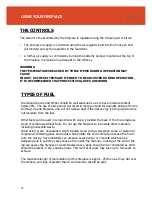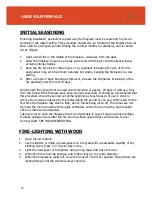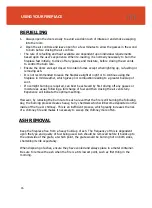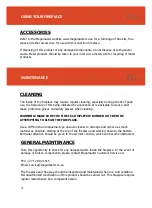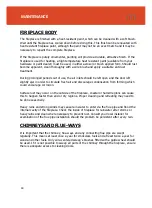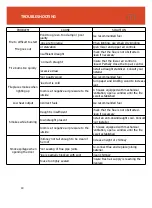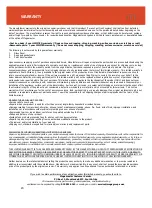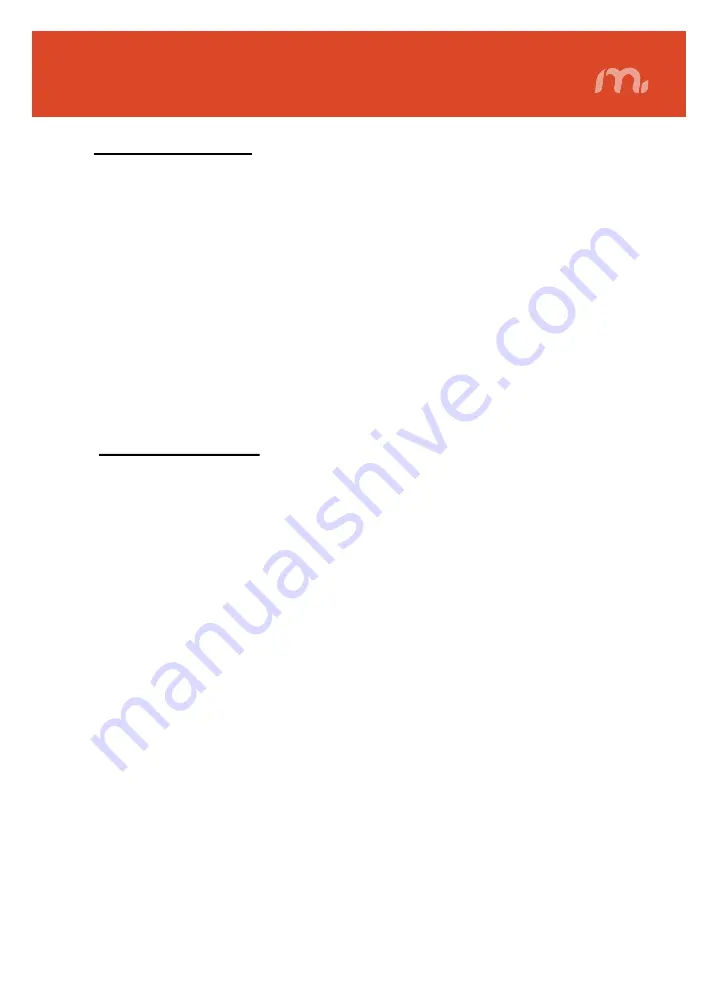
USING YOUR FIREPLACE
14
THE CONTROLS
The amount of heat emitted by the fireplace is regulated using the following air controls:
•
The primary air supply is controlled using the air regulator built into the front ash door
(all models) and by the regulator in the feed door.
•
A further air supply is controlled by turning the butterfly damper mounted at the top of
the fireplace to provide an up draught to the chimney
WARNING
THE TEMPERATURES REACHED BY THESE ITEMS DURING OPERATION MAY
CAUSE
INJURY. AS THESE ITEMS ARE ITENDED TO BE ADJUSTED DURING OPERATION,
IT IS RECOMMENDED THAT PROTECTIVE GLOVES ARE WORN
TYPES OF FUEL
Fuel should be dry and timber should be well seasoned so as to have moisture content
below 20%. The use of damp wood will result in more soot and tar deposits being left in the
chimney, flu and fireplace, and will not release heat if thermal energy is being used to drive
out moisture from the fuel.
Other fuels can be used in conjunction with wood, provided the base of the fire remains as
wood or compressed block fuels. Do not use the fireplace to incinerate other materials
including household waste.
Avoid using ‘green’ unseasoned wood, treated wood such as telegraph poles, or plywood /
chipboard containing glues and resins which pollute the environment and cause the fire to
burn too quickly. Such materials can produce excessive tar or creosote which can be
damaging and in extreme cases cause a fire inside the chimney. Looking at the end of the
log can assess the dryness of wood. Radial cracks, deep enough to be considered as splits
should be present in dry, seasoned logs. This level of dryness may take up to two years to
achieve.
The maximum length of fuel suitable for this fireplace is approx. 25cm so as to lay flat over
the embers, and logs of greater than 6 cm diameter should be split.


